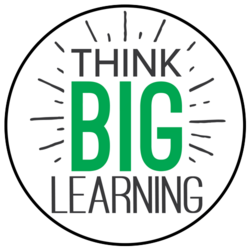
We have all lived through classes where our teacher/professor lectured on and on and we wrote notes until our hands fell off, right? (Confession: I may have even been that teacher some days) Then following these epic lectures, we had to go home and teach ourselves the content that we missed while doing all that writing. As teachers, we know this isn’t ideal, but how do we present information in our classes to help our students write less and retain more? And how can students begin to engage with and understand the content better on the day that we share it, instead of trying to sort it out later?
Marianne and I have been working to improve in this area for years with the intentional use of interactive notes pages. There are a few specific strategies we try to employ with our notes in order to make them more interactive and to help students learn more in the process.
Chunking Content
Our brain craves organization and processes information best when it is in bite-size chunks. We can visually separate big ideas to help students organize and make connections between what they are learning. In this example, students learn about the Earth, Moon, and Sun and their relationships to one another. This includes rotation and revolution of the Earth and the resulting patterns.

Fill-in-the-Blank Notes
Instead of students writing down every word/phrase/sentence of the information I deem important, fill-in-the-blank notes, sometimes called Cloze Notes, allow them to listen more and only write the key words I choose. With this type of notes, I can even talk through all of the information while showing rich visuals, without having students write anything yet. Then once we’ve discussed that part, we can talk about the key terms they need to record. Students can even help fill in the blanks because they’ve just learned a little about the topic. The example here is our Plant Parts Foldable Notes Page, which shows the different structures and functions of various plant parts.

Coloring and Identifying Parts of a Diagram
Often times in science I want my students to understand a diagram or visual associated with the content. As part of learning the material, they can color or label the parts as part of their notetaking process. For example, students color the parts of the atom to match the color of the term. The students also draw colored arrows to each atomic structure to further reinforce the material in the diagram. Adding color to notes makes them more memorable for our students.

Adding Card Sorts
Another way to check for understanding is to include a card sort as part of the notes page. Students sort the cards, which have either text or visuals, to match the concepts on the notes page. They can then glue the cards onto their notes page, or if you want them to be able to practice with the cards additional times, they can just be placed in an envelope/pocket in their interactive notes page. In these examples, students are identifying the visual that goes with each property of matter or type of movement across a cell membrane.






